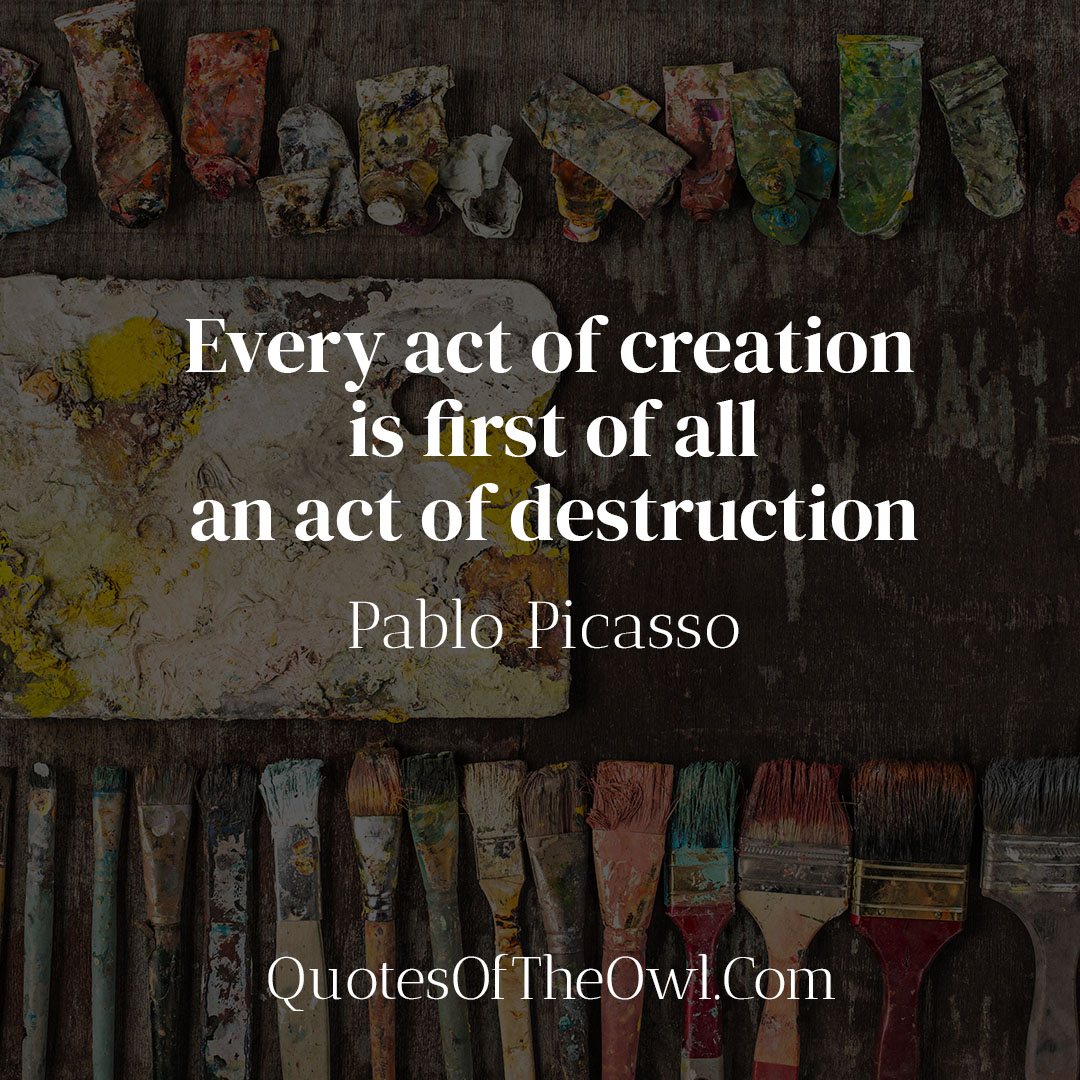Discover the Meaning Behind Pablo Picasso’s Quote “Every Act of Creation is First of All an Act of Destruction”
Picasso’s quote “Every act of creation is first of all an act of destruction” suggests that in order to create something new, we must first destroy something that already exists. This destruction can take many forms, such as breaking down old ideas, demolishing established norms, or discarding old methods.
At first glance, this quote may seem paradoxical. How can destruction lead to creation? However, upon further reflection, we can see that the creative process often involves taking something apart and reassembling it in a new way. In this sense, destruction is a necessary part of the creative process.
Destruction as a Form of Creation
In many ways, destruction can be seen as a form of creation. When we destroy something, we are creating space for something new to emerge. For example, when a forest fire destroys trees and vegetation, it creates space for new growth and regeneration. Similarly, when an artist destroys an old canvas or sculpture, they are creating space for a new work of art to emerge.
This concept of destruction as a form of creation is not new. In fact, many ancient cultures recognized the importance of destruction in the creative process. For example, in Hindu mythology, the god Shiva is both the destroyer and creator of the universe.
Picasso’s Artistic Style
Picasso’s artistic style is characterized by its boldness, experimentation, and constant evolution. He was not afraid to break with tradition and create something new. Throughout his career, he explored a wide range of styles, from his early Blue and Rose periods to his later Cubist and Surrealist works.
Picasso’s use of destruction in his art was not limited to physical destruction, such as tearing up canvases or breaking sculptures. He also used destruction as a metaphorical tool, such as breaking down traditional forms and conventions in his Cubist works.
Examples of Picasso’s Use of Destruction in His Art
Picasso’s use of destruction in his art can be seen in many of his most famous works. For example, in his Cubist masterpiece “Les Demoiselles d’Avignon,” Picasso broke with traditional depictions of the female form by fragmenting and distorting the figures. This deconstruction of the female form can be seen as a form of destruction that paved the way for a new way of representing the human figure.
Similarly, in his later Surrealist works, Picasso used destruction as a way to explore the subconscious mind. His painting “Guernica,” which depicts the horrors of the Spanish Civil War, is a powerful example of how destruction can be used to convey a message and create a work of art that has lasting impact.
The Role of Destruction in the Creative Process
While destruction is often associated with negativity and chaos, it can actually play a positive role in the creative process. Destruction can help us break out of old patterns and habits and open our minds to new possibilities. By breaking down old ideas and ways of thinking, we create space for something new and innovative to emerge.
However, it is important to note that destruction should not be the end goal of the creative process. Rather, it should be seen as a means to an end – a way to clear the path for something new and meaningful to emerge.
Benefits of Embracing Destruction in the Creative Process
Embracing destruction in the creative process can have many benefits. It can help us:
- Break out of old patterns and habits
- Open our minds to new possibilities
- Create space for something new and innovative to emerge
- Challenge established norms and conventions
- Confront difficult emotions and experiences
- Make meaning out of chaos and disorder
By embracing destruction, we can tap into our creativity in new and exciting ways and create works of art that are truly unique and meaningful.
Conclusion
In conclusion, Pablo Picasso’s quote “Every act of creation is first of all an act of destruction” challenges our assumptions about the creative process and invites us to think about destruction in a new way. By embracing destruction as a necessary part of the creative process, we can open ourselves up to new possibilities and create works of art that are truly innovative and meaningful.
Unlock the deeper meaning behind Pablo Picasso’s most powerful quotes!

